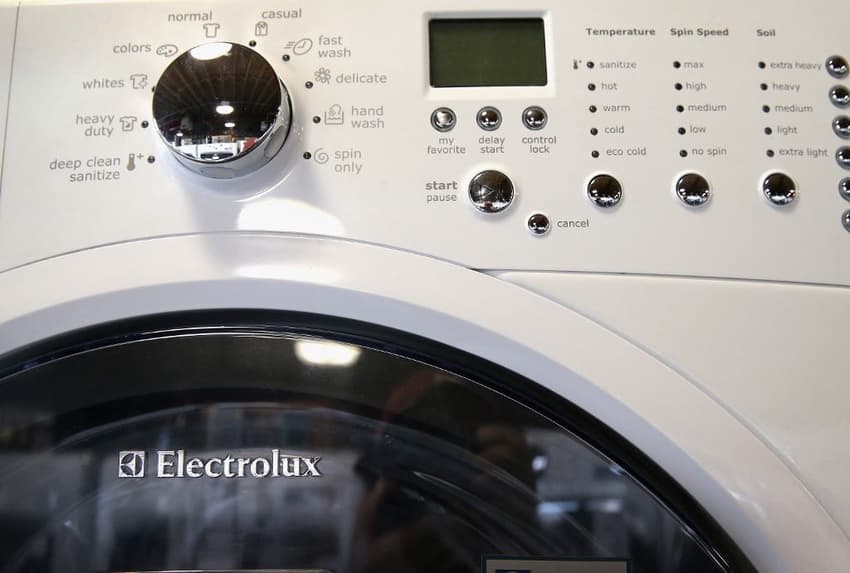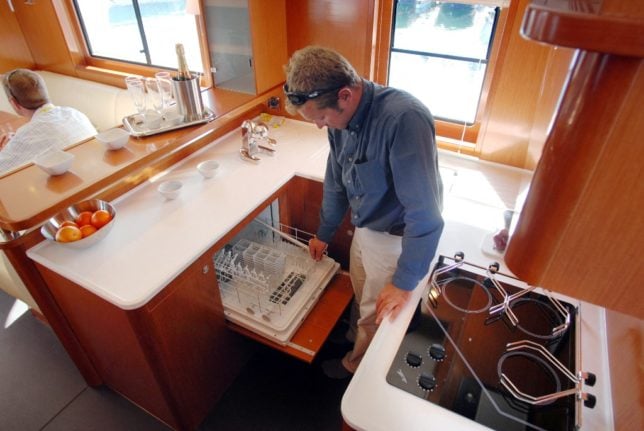At what time of day is electricity cheapest in Italy?

With bills expected to soar yet again in Italy, knowing the most cost-effective time of day to use electrical appliances can help you make savings.
With the arrival of colder weather and the price of everything seemingly rising, saving on electricity bills can be a big help – even if it’s just a few Euros here and there.
Italian energy regulator Arera estimates that the average household will spend a total of €1,322 on electricity in 2022 – up from €632 last year.
READ ALSO: Energy crisis: Italy risks ‘thousands’ of business closures, say industry groups
One thing households may be able to do is to only switch on their electrical appliances in the cheapest time slots (or fasce orarie).
So when is the cheapest time of day to use the electricity - and the most expensive?
What’s a fascia and how does it work?
Firstly, the price you’ll pay for electricity in Italy depends on the type of tariff you’re on.
If you’re not sure, check your energy bill. It should specify one of these three types of energy tariffs available to Italian consumers:
- tariffe monorarie (single- or flat-rate tariffs)
- tariffe biorarie (two-slot tariffs)
- tariffe multiorarie (multi-slot tariffs).
Single-rate tariffs are fairly rare nowadays. Households on this type of contract pay the same amount per kilowatt of electricity they consume irrespective of the time of day.
Most people will be on either a two- or a multi-slot tariff, meaning electricity prices fluctuate according to the time slot in which energy is used.
As of 2009, Arera offers three different time slots – F1, F2 and F3.
These are based on daily local energy demand estimates (the greater the demand, the higher the prices), with the cost of electricity (euros per kilowatt-hour, €/kWh) being higher in F1 and lower in F3.
Here’s an overview of the three slots:
- F1 (also known as ore di punta): 8am-7pm, Monday to Friday
- F2 (also known as ore intermedie): 7am-8am and 7pm-11pm, Monday to Friday; 7am-11pm, Saturday
- F3 (also known as ore fuori punta): 11pm-7am, Monday to Saturday; all day on Sunday
Generally speaking, it’s better to switch on appliances (or schedule their operation) during the F2 and F3 time slots when prices are lower.

Households on two-slot or multi-slot tariffs are advised to switch on their electrical appliances in the F2 and F3 slots. Photo by Xavier LEOTY / AFP
But it’s worth noting that the F3 time slot (the fascia with the lowest prices) only applies to households on multi-slot tariffs.
In fact, residents on tariffe biorarie (two-slot tariffs) only have two time slots available to them – F1 and F23, with the latter essentially being a merger of F2 and F3.
In this case, the F23 slot offers fairly favourable prices compared to F1, but costs are still comparatively higher than in F3 alone.
Help: How do I know what tariff I’m on?
The type of tariff you’re on is usually specified in your energy bill.
If you’re on a two-slot tariff (bioraria) or on a multi-slot one (multioraria), the amount of energy you used in each applicable time slot will also be shown in your bill – generally on the second page, under letture (readings) or consumo (consumption).
The bill will also tell you how much you were charged for the energy consumed in each slot, including additional IVA (or VAT) and other duties.
For any other questions about your energy contract, you should contact your provider. Contact details can be found in your latest bill.
Comments
See Also
With the arrival of colder weather and the price of everything seemingly rising, saving on electricity bills can be a big help – even if it’s just a few Euros here and there.
Italian energy regulator Arera estimates that the average household will spend a total of €1,322 on electricity in 2022 – up from €632 last year.
READ ALSO: Energy crisis: Italy risks ‘thousands’ of business closures, say industry groups
One thing households may be able to do is to only switch on their electrical appliances in the cheapest time slots (or fasce orarie).
So when is the cheapest time of day to use the electricity - and the most expensive?
What’s a fascia and how does it work?
Firstly, the price you’ll pay for electricity in Italy depends on the type of tariff you’re on.
If you’re not sure, check your energy bill. It should specify one of these three types of energy tariffs available to Italian consumers:
- tariffe monorarie (single- or flat-rate tariffs)
- tariffe biorarie (two-slot tariffs)
- tariffe multiorarie (multi-slot tariffs).
Single-rate tariffs are fairly rare nowadays. Households on this type of contract pay the same amount per kilowatt of electricity they consume irrespective of the time of day.
Most people will be on either a two- or a multi-slot tariff, meaning electricity prices fluctuate according to the time slot in which energy is used.
As of 2009, Arera offers three different time slots – F1, F2 and F3.
These are based on daily local energy demand estimates (the greater the demand, the higher the prices), with the cost of electricity (euros per kilowatt-hour, €/kWh) being higher in F1 and lower in F3.
Here’s an overview of the three slots:
- F1 (also known as ore di punta): 8am-7pm, Monday to Friday
- F2 (also known as ore intermedie): 7am-8am and 7pm-11pm, Monday to Friday; 7am-11pm, Saturday
- F3 (also known as ore fuori punta): 11pm-7am, Monday to Saturday; all day on Sunday
Generally speaking, it’s better to switch on appliances (or schedule their operation) during the F2 and F3 time slots when prices are lower.

But it’s worth noting that the F3 time slot (the fascia with the lowest prices) only applies to households on multi-slot tariffs.
In fact, residents on tariffe biorarie (two-slot tariffs) only have two time slots available to them – F1 and F23, with the latter essentially being a merger of F2 and F3.
In this case, the F23 slot offers fairly favourable prices compared to F1, but costs are still comparatively higher than in F3 alone.
Help: How do I know what tariff I’m on?
The type of tariff you’re on is usually specified in your energy bill.
If you’re on a two-slot tariff (bioraria) or on a multi-slot one (multioraria), the amount of energy you used in each applicable time slot will also be shown in your bill – generally on the second page, under letture (readings) or consumo (consumption).
The bill will also tell you how much you were charged for the energy consumed in each slot, including additional IVA (or VAT) and other duties.
For any other questions about your energy contract, you should contact your provider. Contact details can be found in your latest bill.
Join the conversation in our comments section below. Share your own views and experience and if you have a question or suggestion for our journalists then email us at [email protected].
Please keep comments civil, constructive and on topic – and make sure to read our terms of use before getting involved.
Please log in here to leave a comment.